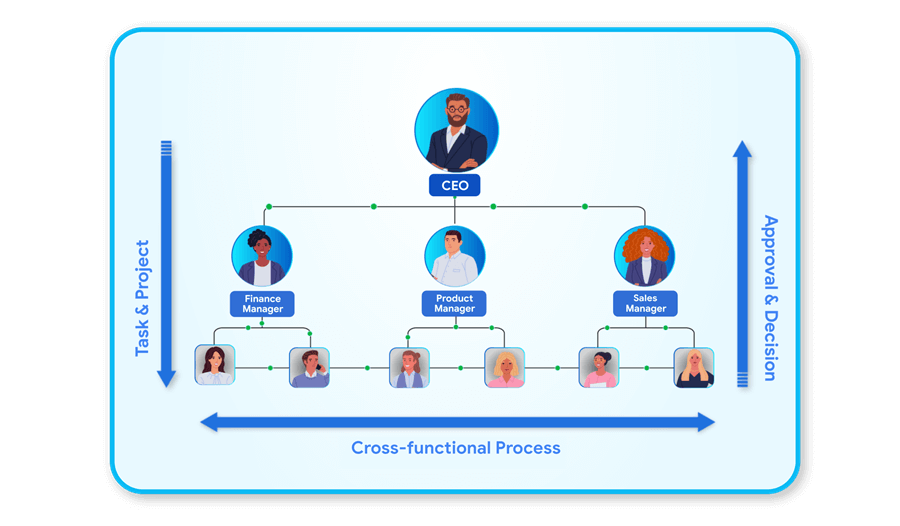Leadership
How to avoid overwhelm as a leader: It's beyond task management

One day our team at Rework.com had an online demo session with a business owner. There was nothing fancy about her - a petite, 50-year-old woman with wrinkles and dark circles beneath her eyes. Behind her back and all over her desk are piles of documents. She needed some help with her management.
After several discovery questions, she said this thing that caught our attention: “I’ve been working 12 to 18 hours a day for the last 18 years. My people ask me to be around all the time; there is no such thing as a holiday”.
And that’s what struck us. Since what moment did the exciting journey that she chose to embark on become that overwhelming?
But as your business grows, so do the demands upon you. What once seemed manageable now feels like an endless stream of responsibilities, pulling you in different directions all at once. Every task, every challenge, every opportunity demands your attention, your expertise, your presence.
You slept in visions of building something. Instead, your constant effort now is to keep things from falling apart.
Like our customer, you might realize that you can't keep going like this.
Perhaps you yearn for some balance in your life, or you are eager to explore new ventures beyond. Or maybe you want to keep working on the visions you have been thinking about for so long but couldn’t give enough focus, because you are too busy with daily operations.
Whatever the reason, the need for a solution becomes undeniable. You crave the freedom to step back. You need to regain your focus so that you can direct your time, energy, and resources to what truly matters.
Forget all the arguments about psychological barriers saying you are too obsessed with perfectionism to give up control. In the case of our customer, despite her several attempts to delegate, the team encountered either conflict or paralysis, and she ended up fixing things herself.
What’s the missing thing? How exactly do you navigate this transition from hands-on-everything owner to hands-off leader?
Is it just about task management?
With so much information to process and decisions to make, it is easy for tasks to slip through the cracks or for details to be overlooked. In such cases, business owners often turn to task management tools, which should enable them to track assigned tasks, get reminders, follow up, and monitor employees.
But in our experience, it is not enough.
While these tools relieve the mental load of memorizing details, the burden of designing and allocating tasks remains. As one of our clients once expressed, “Even with a better, digitalized way for task management, our team still rely on us to give them orders”.
Upon working with countless businesses, we’ve learned that work doesn't solely flow from the top down. A business functions as a dynamic organism – while the org chart may convey hierarchy, interactions among people and departments are varied. It's impractical for the owners to be involved in every situation. Thus, the challenge is ensuring all these interactions occur healthily, and a task management system usually falls short of this requirement.
There may be a lack of systems in place to facilitate work effectively and comprehensively.
The three dimensions of work
At Rework, we try to categorize those interactions into three types, and we visualize them in a map below:

1. The top-down dimension
This one is the most recognizable.
Besides the challenge in task management we already mentioned, problems also arise in the assignment process itself. Business owners often fail to communicate their expectations clearly, leading to exhausting back-and-forth conversations. This can occur due to differences in communication styles, assumptions about shared knowledge, or simply poor communication skills.
Of course, a well-designed software solution should guide you on how to give a clear assignment. We will delve into this issue in other upcoming articles.
Now, what’s more important is the other two dimensions of work interactions.
2. The bottom-up approach
This one represents every time your subordinates make a request that you have to decide upon. This is where most bottlenecks occur, but there also lies an opportunity to improve employee empowerment.
Consider a scenario where you assign an employee to lead a new campaign launch. However, they come to you for every decision: what channels the campaign should cover, how much they should spend on each channel, or whether this content should be published. You feel like you are doing all the work of a campaign manager after all.
Sound familiar?
Delegation is often misunderstood. What you often think to be delegation is just assigning actions, not assigning outcomes. You entrust someone with a project but still stand behind every decision.
RACI matrix, which stands for Responsible, Accountable, Consulted, and Informed, is a helpful framework to equip you with a better understanding of all the decision-making areas within a project or process.
- Responsible (R): The one executing tasks or making decisions.
- Accountable (A): The individual ultimately answerable for the outcome.
- Consulted (C): Those consulted for input before decisions are made.
- Informed (I): Those kept updated on decisions but not directly involved.

Once you have mapped out all the decision-making areas, you will see for yourself that you don’t have to be in charge of everything. The problem is often failing to make it clear that you want someone else to be responsible, or even accountable for certain tasks.
Sometimes an organization doesn't need a solution; it just needs clarity - Ben Horowitz
A software solution, in this case, can bring transparency to decision-making. You can set up request forms and approval rules once and for all, and people will know who to approach for approvals.
3. The cross-functional dimension
And now, about the last dimension. As illustrated in the map, this one involves collaborations between different teams and departments to keep the business running smoothly, known shortly as “process”.
Much of your workload stems from a lack of standard processes across functions. As your team expands, they no longer work as closely together, and you end up coordinating everything. Without standard procedures, team members might adopt different methods for similar tasks, requiring your constant attention to keep everyone on the same page.
A lot of effort is also wasted every time you onboard new employees, and need to go through the instructions all over again.
You might have heard of SOPs—Standard Operating Procedures—which are basically "how-to" documents providing step-by-step guides to carry out a particular process.
Start by defining:
- What the process aims to achieve, known as objective
- What's needed to start the process and what it generates, known as input and output
- Who's involved and what they're responsible for
- Which steps to follow, with detailed activities involved
- How much time should be spent on each step
SOPs empower team members by giving them the instructions they need to act independently, instead of waiting for your direction.
Also, by outlining the most efficient methods for completing tasks, SOPs help team members complete their work more quickly with fewer errors and conflicts, saving you from handling unexpected situations.
However, it should be noted that writing an SOP doesn’t ensure it can be followed. Employees may struggle to access or understand lengthy documents, and they are often separate from the daily tools, making it hard for employees to refer to them consistently.
Thus, simply documenting SOPs isn’t enough. You need to integrate these procedures into daily work. That’s when a digital system of engagement comes in handy. It allows employees to follow rules automatically without needing to know every detail of the standard.
Stop doing, start designing
Remember, top-down management isn’t your only responsibility. You also need to make decisions on bottom-up requests and handle cross-functional issues. To avoid being overwhelmed by minor tasks, you should (1) clarify your role in various situations, based on the above-mentioned model, (2) delegate decision-making authority, and (3) standardize processes so employees can do their jobs on their account. Meanwhile, technology solutions help bring clarity and automation to the operation.
You do not need a way to control better, but rather to decentralize your control. When, and only when your employees are empowered can you be lifted off of burdens and start fulfilling your role as a leader.
